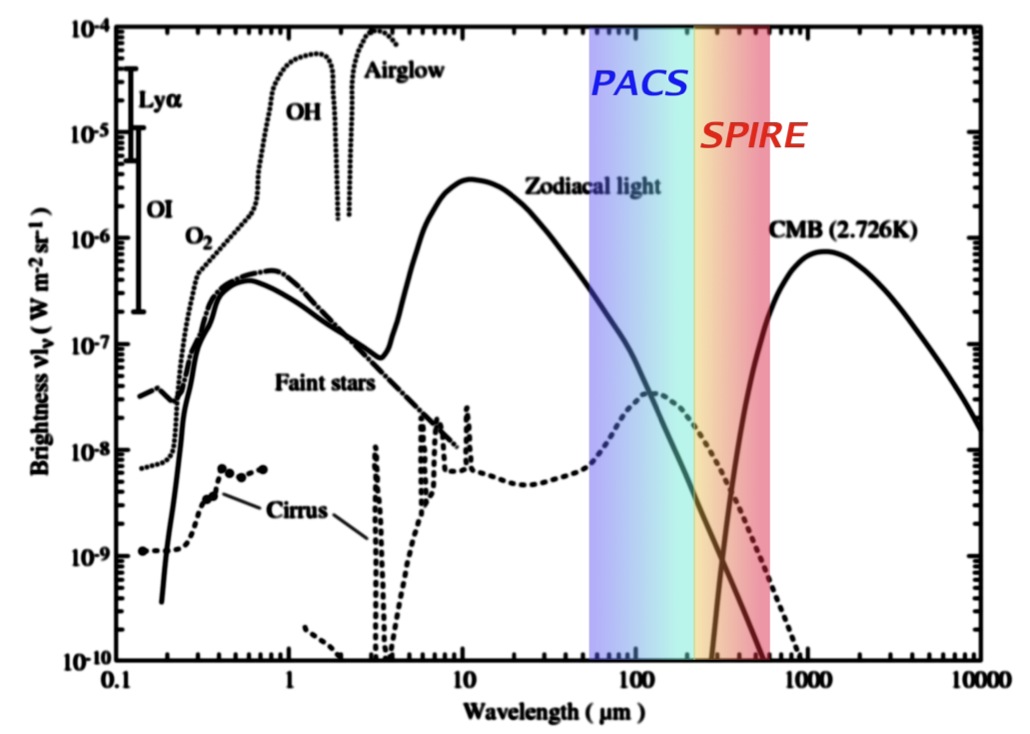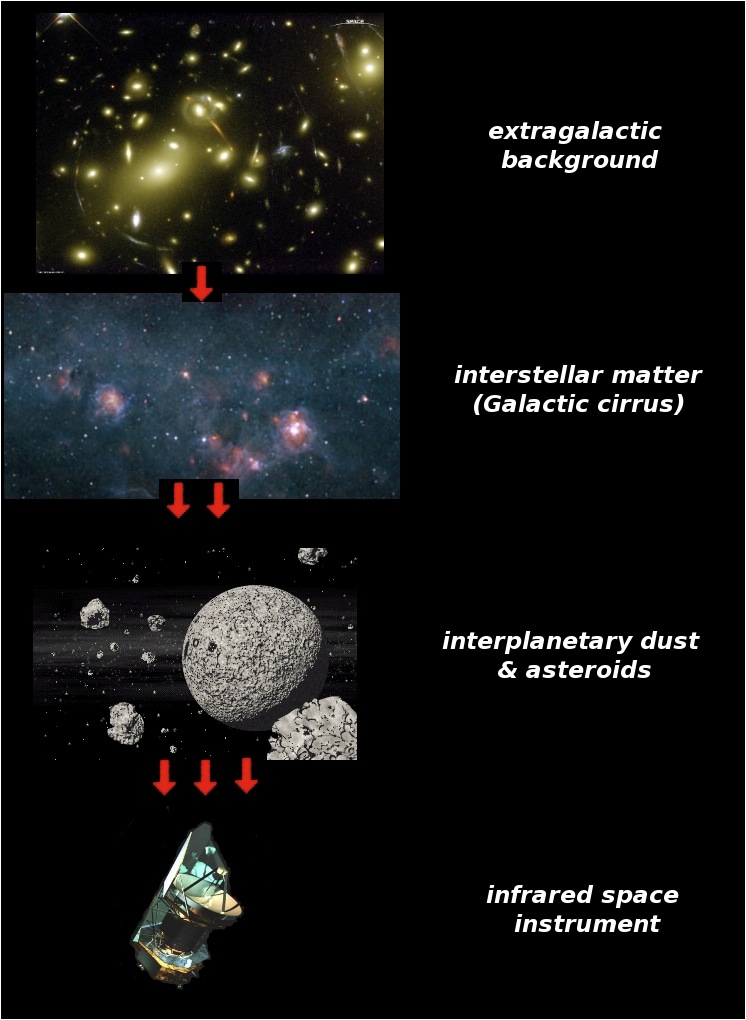Infrared Background and Confusion Noise.
|

For space-born Far-Infrared and submm instruments the sky background predominantly originates from the following astrophysical components:
- Zodiacal light and minor bodies in the solar system. These are the thermal emission of dust particles of the Zodiacal Light nebula
(the major contributor to the sky brighness throuhout the infrared wavelength regime),
and the thermal emission of the asteroid populations.
- The Galactic cirrus emission. The interstellar medium shows a strong concentration around the Galactic plane and this feature is
conspicious at many wavelengths. However, there is another component of the interstellar medium,
that is not sticked to low Galactic latitudes. The Galactic cirrus emission, discovered by IRAS
(Low et al. 1984), is the thermal emission of dust in weak and cool interstellar HI clouds (typically
n<102cm-3 and T=20K). It has a smooth modified blackbody SED, with some additional
infrared cooling lines. This is a strong emitting source, and dominates the sky for wavelengths greater than 70µm, even at high Galactic latitudes. The cirrus emission is very structured, and show a typical
filamentary structure.
- The extragalactic background. The cosmic infrared background (CIB) is the second strongest component of the extragalactic
background (the strongest being the cosmic microwave background). The extragalactic background is the
accumulated light of distant, unresolved galaxies. The CIB is a relic radiation of the star and galaxy
formation history of the Universe.
Another component of the infrared background is the emission from faint stars in the Milky Way. This is an important component for near- to mid-infrared
wavelenghts, but has a negligible contribution for longer wavelengths, e.g. those of PACS and
SPIRE.
|

The confusion noise is the uncertainty in the determination of point source flux due to the uncertainty in the determination of the background flux. To contribute to the confusion noise, the background has to be stohastic, i.e. it has to change from one place to the other in an unpredictable way (a random field).
There are two criteria to clearly detect a point source: the source flux is above the average fluctuation amplitude of the background (photometric criterium) and the source in far enough from sources of similar brightness so that it could be detected individually (density criterium). These two criteria set the confusion noise limit: above this level compact sources can be detected.
In the infrared the confusion limit often have a serious impact on source detection. This is partly due to the poor resolving power of infrared detectors (compared with optical detectors) and partly due to the astrophysical properties of the infrared sky bachground.
Several astrophysical components (see The Far-Infrared Sky, previous section) contribute to the confusion noise of the sky background, all of them showing spatial fluctuations.
The confusion noise is an absolute limit, unlike e.g. instrument noise, it cannot be improved by longer integration time, since it is a signal itself, the signal of the background.
The sky confusion noise for the Herschel Space Telescope
There are two main components, which have a notable contribution to the confusion noise for Herschel/PACS and SPIRE photometric observations. These are the extragalactic background (specifically the cosmic infrared background) and the thermal emission of the interstellar medium in the Galaxy.
Confusion noise due to other components (zodiacal light, asteroids) has proved to be negligible for the Herschel mission.
For the SPIRE filters the cirrus confusion noise remains in the ~10mJy order for medium surface brightness regions, since the intensifying confusion noise by the increasing wavelength is compensated by the declining SED of the cirrus, compared to the FIR.
|
Figure shows the relative strength of the major confusion noise components for PACS. Three kind of regions are discriminated according to the dominant
source of confusion noise: deep blue, CIB dominated; medium blue, cirrus and CIB are in the same
order; light blue, cirrus (ISM) dominated.
The light blue region closely follows the shape of the
Galactic plane.
|
|

